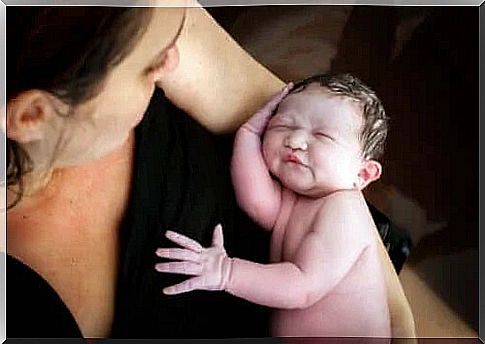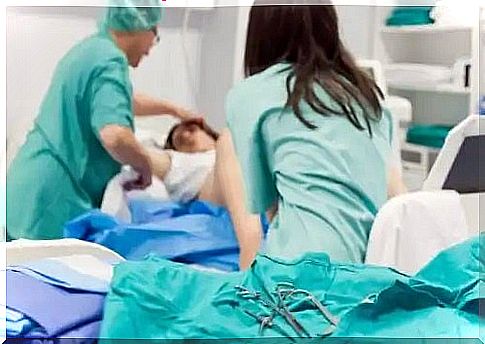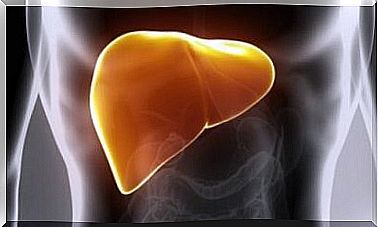Risks And Benefits Of Lotus Birth

Many women find that modern birth is no longer emotional and spiritual, so more and more people are looking for other options, such as lotus birth. However, it is important to remember that what turned birth into a highly medicalized, methodical and controlled hospital procedure was the desire to decrease mortality (death) and morbidity (disease) of mothers and babies. What are the risks and benefits of lotus birth?
Adequate care for mothers and babies is a priority of the World Health Organization (WHO). The application of scientific evidence-based health procedures has reduced the overall risk of maternal death from 1 death in 73 women to 1 death in 180 women.
This is why parents need to be well-informed when deciding how they want to give birth to their child. Lotus birth includes practices that are not based on scientific evidence.
What is a lotus birth?
This type of birth focuses on leaving the umbilical cord intact after the birth of the baby. The baby will remain attached to it and the placenta until it detaches on its own. This usually occurs between the third and tenth day after birth.
The placenta requires washing to remove the remaining blood and is usually wrapped in an absorbent material, such as a diaper. Finally, it is rubbed with salt and herbs to regulate its humidity and prevent unpleasant odors.
Pregnancy could not happen without the placenta, because it acts as a barrier and prevents the maternal immune system from attacking the baby as if it were a foreign body.
In addition, the oxygen and all the nutrients the baby needs for its own development come from the mother through the placenta and umbilical cord. After birth, babies will draw oxygen into the lungs, which will then reach the bloodstream.

Benefits attributed to lotus birth
Risks of lotus birth
We have already established that the benefits of lotus birth have no scientific basis. We will now discuss the risks.
At this point, you may be wondering why the birth of the lotus is not the rule. As mentioned above, there is no scientific evidence in favor of it as a safe and useful practice.
In fact, the birth of the lotus is risky and most professionals discourage it. As long as there is no solid evidence in its favor and there are reports of cases where it posed a danger to newborns, it is neither ethical nor feasible to recommend it.
It is not true that there is no risk of infection for the baby because the cord is not cut. The decaying placenta can become a source of bacteria. Cases of omphalitis (infection of the navel) and sepsis (infection of the blood) have been reported.
In addition, an uncontrolled and permanent flow of blood from the placenta can lead to jaundice (yellowing of the eyes and skin), polycythemia (too many red blood cells that cause an increase in viscosity) and thrombosis.
Lotus birth recommendations
Labor and birth management
Skin-to-skin contact is crucial in the first hour to facilitate breastfeeding after birth. When the mother is well and the baby has been born without complications, the nurse places the newborn on her abdomen, dries it and assesses her breathing. She waits a few minutes before cutting the umbilical cord. Then cover the baby with a dry blanket. He does not give up other routine care, only postpones them until after the first hour of close contact of the baby with his mother.

Despite the absence of any scientific evidence to support the birth of the lotus, some parents consider it a positive experience that they would like to repeat. This is partly because our human feelings, beliefs, thoughts, emotions, and spirituality are an essential part of life. Medical knowledge, on the other hand, often focuses on biology and physics, neglecting other needs.









